POMELLA'S POMEGRANATE PHENOLICS INHIBIT TYPE-I COLLAGEN CROSS-LINKING INDUCED BY GLYCATIVE STRESS
Download the New Research Summary
Why Pomella to Support Healthy Skin Aging from within?
Pomella's patented extraction process delivers an ellagitannin rich profile standardized to punicalagin content. Punicalagins are a group of potent antioxidants unique to the pomegranate fruit. These ellagitannin polyphenols are water soluble, highly bioavailable, supported by safety data, and are shown to possess a high absorption rate. Not only do punicalagins offer a powerful kick of antioxidant properties on their own; they can break up into smaller polyphenols that are absorbed and extensively metabolized.
fruit. These ellagitannin polyphenols are water soluble, highly bioavailable, supported by safety data, and are shown to possess a high absorption rate. Not only do punicalagins offer a powerful kick of antioxidant properties on their own; they can break up into smaller polyphenols that are absorbed and extensively metabolized.
Recently, researchers at the University of Rhode Island re-examined Pomella's effects on collagen glycation. Collagen is a class of long-lived structural proteins usually found in the extracellular space in various fibrous tissues including the skin, tendons, and ligaments. When collagen fibrils are subjected to glycative stress, including ultraviolet rays and oxidative stress, it leads to its structural modification and excess cross-linking. These modifications are critical factors in skin aging.1
Read more about how Pomella® is drawing attention in the fields of health and beauty!
Pomella: Beauty from within-
- Exhibits protective effects from UVA/UVB inducted damage2
- Anti-microbial properties3
- Contains 50% polyphenols
- Standardized to punicalagins
- Powerful antioxidant to promote healthy skin aging
References:
1 Cai A et al. Pomegranate phenolics inhibit type I collagen cross-linking induced by glycative stress. FASEB J. 2018 Apr. 32(1): 656.35.
2 Pacheco-Palencia LA et al. Protective effects of standardized pomegranate (Punica granatum L) polyphenolic extract in ultraviolet-irradiated human skin fibroblasts. J Agric Food Chem. 2008 Jul 18. EPub 2008 Aug 22. DOI: 10.1021/jf8005307
3 DiSilvestro RA et al. Pomegranate mouth rinsing effects saliva measures. Phytother Res. 2009. 23: E Pub 2009 Jan 23. 1123-1127. DOI: 10.1002/ptr.2759
